I taught a very interesting new class this year. The group was ages 12 and up, and they were all beginners. I haven’t taught this kind of group in about 4 years, so I had to review some of the basics of teaching ballet technique to older kids. It’s one thing to teach a group of 12 to 15 year-old dancers who have been dancing since they were three, but starting fresh with these students upon very little to no foundation is a different story entirely. For those of you who have students like this, here are some great ballet basics to instill in your beginners. These things won’t come naturally for them, since they haven’t grown up using them, but they will definitely be useful to them moving forward.
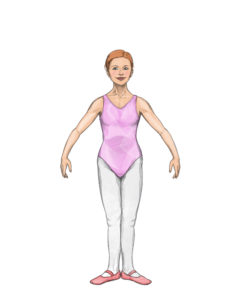 One of the first things taught in ballet is how to stand in the ballet alignment. It is a more precise type of posture than is used for other activities. Placement is posture in motion, again, quite specialized for ballet.
So, what does this look like? Weight needs to be evenly distributed on three points of the foot (base of the big toe, base of the little toe, heel), and equally on both feet; then hips centered over feet; then shoulders centered over hips; and head centered over shoulders.
One of the first things taught in ballet is how to stand in the ballet alignment. It is a more precise type of posture than is used for other activities. Placement is posture in motion, again, quite specialized for ballet.
So, what does this look like? Weight needs to be evenly distributed on three points of the foot (base of the big toe, base of the little toe, heel), and equally on both feet; then hips centered over feet; then shoulders centered over hips; and head centered over shoulders.
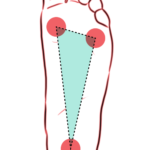 Standing in this new way may feel strange to you at first. In time, you will find it takes less energy, gives your joints more freedom to move, and gives your whole body a better sense of balance. It may take several weeks for you to become accustomed to standing this way. Make this new stance a habit in all of your moving and standing–not just in class.
Placement is posture in motion. Dance is movement. Having your body correctly placed means having the bones in correct relationship to each other and to the floor. Correct placement enables your muscles to be used and strengthened in their most efficient positions and relationships; it enables muscle groups to work together as they were intended to do. This ultimately gives you far greater control over your movements and will help to prevent movement injuries.
Standing in this new way may feel strange to you at first. In time, you will find it takes less energy, gives your joints more freedom to move, and gives your whole body a better sense of balance. It may take several weeks for you to become accustomed to standing this way. Make this new stance a habit in all of your moving and standing–not just in class.
Placement is posture in motion. Dance is movement. Having your body correctly placed means having the bones in correct relationship to each other and to the floor. Correct placement enables your muscles to be used and strengthened in their most efficient positions and relationships; it enables muscle groups to work together as they were intended to do. This ultimately gives you far greater control over your movements and will help to prevent movement injuries.
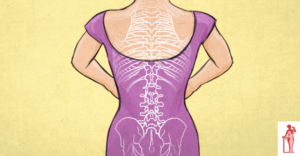 If you were to make a tower of building blocks, you know that it must not lean off center or it will fall. Most people do not stack the bones, or building blocks of their bodies in a vertically balanced way. The only reason they do not fall over is that their muscles work harder than necessary in order to hold them up against gravity!
By learning to stack the “building blocks” of your body in a vertically balanced way, you will relieve your muscles of some unnecessary and strenuous work, especially the muscles of the lower back.
The correct position may not feel comfortable at first, because the muscles that should hold you there will not be strong. It will become more comfortable as your postural muscles strengthen and adjust.
If you were to make a tower of building blocks, you know that it must not lean off center or it will fall. Most people do not stack the bones, or building blocks of their bodies in a vertically balanced way. The only reason they do not fall over is that their muscles work harder than necessary in order to hold them up against gravity!
By learning to stack the “building blocks” of your body in a vertically balanced way, you will relieve your muscles of some unnecessary and strenuous work, especially the muscles of the lower back.
The correct position may not feel comfortable at first, because the muscles that should hold you there will not be strong. It will become more comfortable as your postural muscles strengthen and adjust.
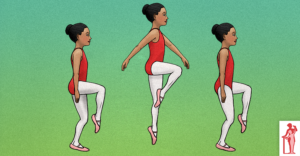

I. The Beginning–Conditioning for Ballet
Dancing is a fun way of keeping yourself physically fit. Ballet is especially good as it can help you to learn to stand and move more efficiently, thus increasing your endurance and your potential range of movement. The exercises you will learn in class are designed to encourage correct skeletal alignment, and to strengthen the muscles needed for dancing. Professional dancers do these same exercises in some form every day for as long as they dance. Ballet technique needs to be based on a strong background of natural movement. Strengthening your ability to do natural movements will improve your chances with ballet technique. Natural movements such as walking, running, skipping, polkas, gallops, etc. are also an excellent pre-barre warmup.Dancers look better when they move because they have learned to use their muscles more efficiently. This more efficient use of the muscles is what produce the grace, poise and superior coordination traditionally associated with the study of ballet.
Muscles must work in order to get strong. They cannot work without plenty of energy (good, real foods!) available at all times. They should work hard enough in class or practice to get a little tired. Once a week is not enough to increase your strength very fast, so home practice will need to he an important supplement to your ballet class. As you practice, remember that you are “teaching your muscles” how to move. Teach yourself with care. Details do make a difference. A few minutes of careful practice will do a lot more good than an hour of straining to exhaustion.II. Posture and Placement

Demi 2nd Arms

Our feet have three weight bearing points called the Triangle of the Foot
III. Vertical Balance
Having your weight centered against gravity gives you more control over your movements, allows you to be graceful and to move beautifully. It is well worth the time it takes to learn how to use this principle. If you were to make a tower of building blocks, you know that it must not lean off center or it will fall. Most people do not stack the bones, or building blocks of their bodies in a vertically balanced way. The only reason they do not fall over is that their muscles work harder than necessary in order to hold them up against gravity!
By learning to stack the “building blocks” of your body in a vertically balanced way, you will relieve your muscles of some unnecessary and strenuous work, especially the muscles of the lower back.
The correct position may not feel comfortable at first, because the muscles that should hold you there will not be strong. It will become more comfortable as your postural muscles strengthen and adjust.
If you were to make a tower of building blocks, you know that it must not lean off center or it will fall. Most people do not stack the bones, or building blocks of their bodies in a vertically balanced way. The only reason they do not fall over is that their muscles work harder than necessary in order to hold them up against gravity!
By learning to stack the “building blocks” of your body in a vertically balanced way, you will relieve your muscles of some unnecessary and strenuous work, especially the muscles of the lower back.
The correct position may not feel comfortable at first, because the muscles that should hold you there will not be strong. It will become more comfortable as your postural muscles strengthen and adjust.
IV. Foot to Leg Alignment
Correctly aligned joints are not injured as easily, and do not tire as quickly. Correct alignment eventually produces a greater range of motion us well. Of particular vulnerability in sports and ballet are the knee and ankle joints. Most people have a few “bad habits” to overcome in this area. It takes time to remove the wrong movement habits and time to replace them with correct habits. You must be willing to spend the time needed if you are to give your knees, ankles, and feet a chance to dance safely. This is a most important concept for dancers to understand and apply. Feet must be in alignment with knees (must point in the same direction) at all times. Basically, the feet, lower leg, and upper leg must line up in the same plane. This is easily seen when the knees are bent, as in a demi plié. This relationship should never be altered, whether in dancing or in other activities. When the legs are turned out for ballet, it is important to keep the arches lifted correctly. Feet must not turn out any further than the leg and hip muscles can turn the thigh. Correct use of foot, ankle, and knee joints helps to prevent unnecessary problems with these joints later on. (See “Avoiding Injury with Correct Muscle Use”)
V. Coordination of the Leg Muscles
When muscle groups work together well, and produce quality movements, we say the person is coordinated. Ballet at its best involves training your legs to plié with correct sequential use of muscle groups, and to do sautés in this way as well. Correct coordination of the leg muscles is what enables you to jump smoothly, gracefully, and without strain. In most people, the plié muscle (on the front of the shin, slightly to the outside) is very weak, so the calf muscles try to take over the job, and this causes the heels to pop off the floor when landing from a jump! The rule is: When the knees are bent as in demi plié, the heels must be on the floor; when the heels leave the floor for a rise (elevé) or sauté, the knees must straighten, or be stretched. The calf muscles are not designed to perform the plié, but to extend the ankle joint and point the feet. Whenever a muscle, or muscle group is used for a job it was not designed for, that muscle group becomes overdeveloped and takes on a larger than necessary size and a less attractive shape. Teaching your leg muscles to work in the correct sequence will make your legs more pleasing to look at, and enable you to move more gracefully. It has been an incredible experience teaching this age group this year. I have seen such a change in their overall placement and how they carry themselves. What a rewarding experience! I hope you can all have that with your students as you apply these principles. Good luck! Related Articles- The Triangle of the Foot
- Avoiding Injury with Correct Muscle Use
- “Point Your Toes” vs. “Point Your Foot”
- Body Placement for Ballet Students

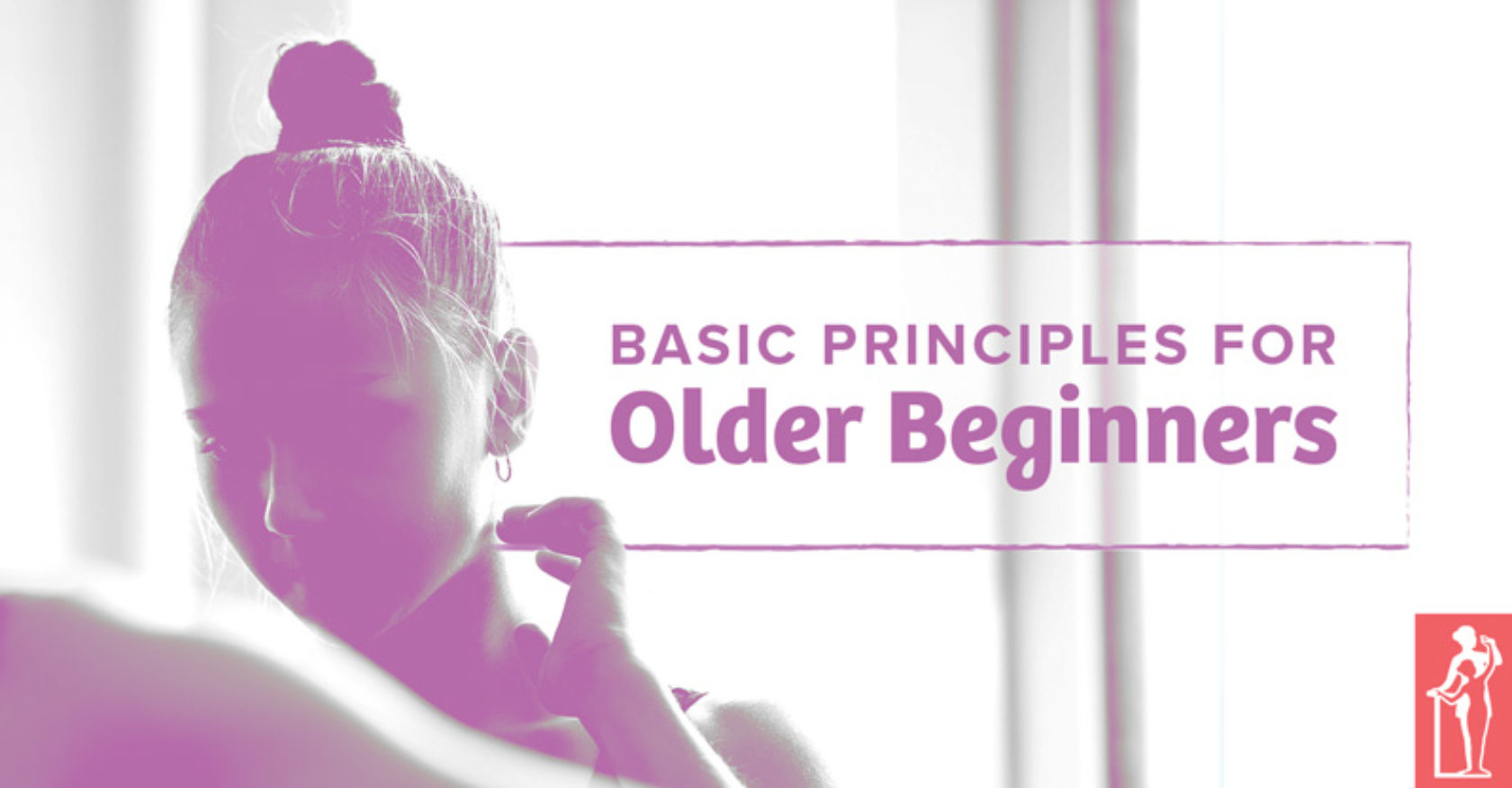
Comments
Guest says
Adult beginner here! I loved this, especially the visual of the “building blocks.” The explanation of knees pointing the same direction as the feet (rather than simply “over the toes”) is also great.
Add Comment